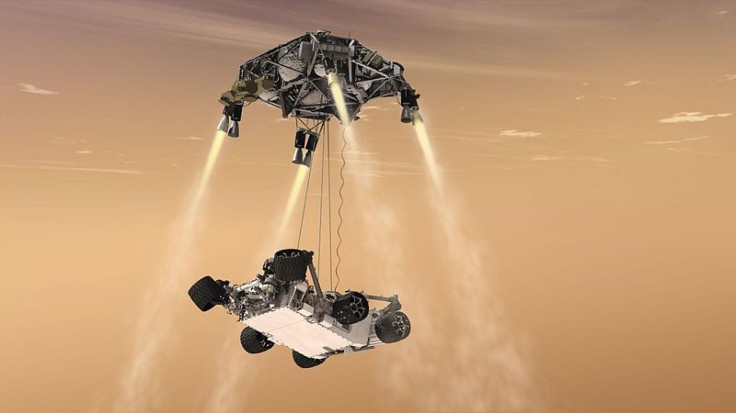Watch NASA's Curisoity Mars Landing Live: Where And How To See The Historic Landing [VIDEO]

NASA will be attempting one of its most impressive and technically challenging feats ever, as it tries to land the Curiosity rover on the surface of Mars within hours.
Obviously, Mars is pretty far away, which means you can't see it in person. So how best to watch the most technologically advanced probe land on the red planet?
Luckily, NASA is offering multiple ways to watch the historic landing, ranging from an assortment of live events across the country to a variety of options for online coverage.
The most popular method of watching the landing will almost certainly be the live streams provided by NASA. People won't have to leave their homes late on a Sunday night to check them out, and their price is right, which is to say free. NASA's official coverage, linked here, begins at 11:30 p.m. EDT.
NASA is also offering a Java-based simulation of the events, available here. The simulation will make the landing a bit easier to follow by illustrating it from angles the video feed will not be able to capture.
NASA will also be providing live Twitter updates at @MarsCuriosity.
Finally, Spaceflight Now, an online space news organizatio,n is providing excellent free coverage throughout Sunday on its Livestream page. Check it out here or via the embedded player at the bottom of this page.
Now onto the live events.
New York will get to experience one of the most impressive viewings of the Mars landing, as the Toshiba Vision screen at One Times Square in Manhattan will be broadcasting the entire event live from 11:30 p.m. to 4 a.m. EDT. Audio for the video feed will be provided by online radio station Third Rock Radio.
"When you think of all the big news events in history, you think of Times Square, and I can think of no better venue to celebrate this news-making event on Mars," John Grunsfeld, associate administrator for NASA's Science Mission Directorate, said in a statement.
Several other New York locations have advertised small-scale, unofficial viewing parties for the events, as well. Most notably, Professor Thom's bar in the East Village in Manhattan will be hosting Andrew Kessler, author of "Martian Summer: Robot Arms, Cowboy Spacemen, and My 90 Days with the Phoenix Mars Mission" at its viewing party.
California residents will also have a special event for the historic Mars landing. The Planetary Society's Planetfest 2012, planned for Pasadena, will broadcast the landing live, along with commentary, videos related to the landing, and a special guest lecture by none other than Bill Nye the Science Guy himself.
Anyone outside the New York or Los Angeles areas can check NASA's website for a listing of all the official Curiosity landing events in their regions. There is at least one such event in almost every U.S. state.
So what can be expected while watching the coverage?
According to NASA, the first seven minutes of the Mars landing are the most important, as the Curiosity rover descends to the Martian surface via a new landing method known as the sky crane. These "seven minutes of terror" are crucial to Curiosity's success.
"During a critical period lasting only about 7 minutes, the MSL spacecraft carrying Curiosity must slow down from about 13,200 mph (about 5,900 meters per second) to allow the rover to land on the surface at about 1.7 mph (three-fourths of a meter per second). For the landing to succeed, hundreds of events will need to go right, many with split-second timing. All are controlled autonomously by the spacecraft," NASA said.
If the landing is successful, Curiosity will begin photographing the Martian surface, starting with low-resolution cameras and gradually bringing out more expensive, high-resolution equipment after the area has been deemed safe.
© Copyright IBTimes 2024. All rights reserved.












